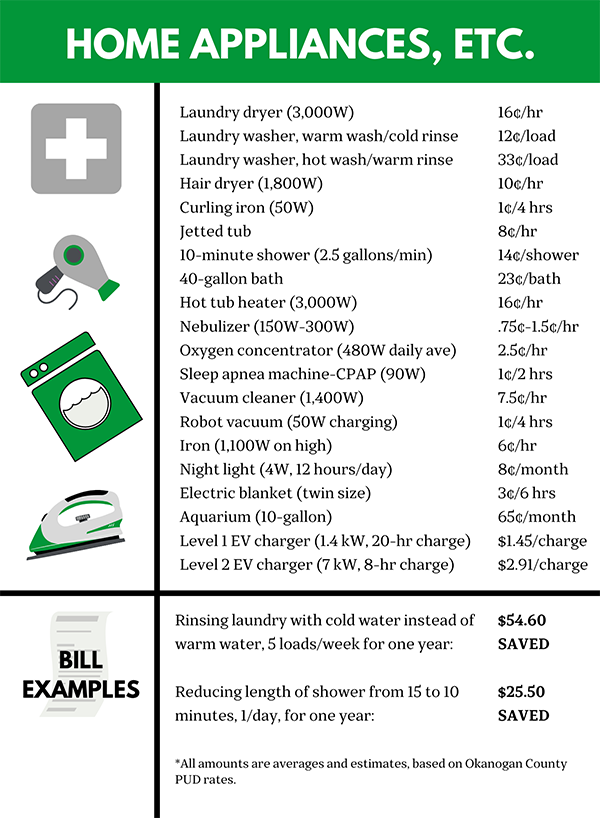This is Part 3 of 5 regarding the energy usage costs of common household items. The more we realize how much energy we use, the more we can find ways to save energy and save money!
Laundry is among one of the least favorite chores for the average American, and it also happens to be one of the appliances that require the most energy.
Updated, efficient appliances can make a BIG difference on the bill. Nowadays, all the appliances you purchase from a store are energy efficient, some more than others. In fact, home appliances are so much more efficient than they used to be that rebates have largely gone away nationwide – it’s expected that consumers must go with efficient options, so no need to incentivize.
Among those bigger appliance energy hogs, laundry dryers with 3,000W ratings cost you about 16 cents/hour to use. Now that washer – rinse with cold water instead of warm and you could save more than $50/year (if you are doing about 5 loads per week).
Jetted tubs or hot tubs are like an extra large water heater, and use a large amount of energy to work.
Minimal energy users: curling irons, robot vacuums, night lights, and sleep apnea machines.
There are many more appliances you might use in your home – our energy usage chart for kitchen appliances is coming next week. If you want to learn more about your favorite home appliances, check out our Energy Services pages.
